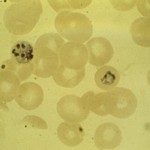Link to Pubmed [PMID] – 16687131
Cardiovasc Res 2006 Jul; 71(1): 50-60
Myocardial progenitor cells expressing Fgf10 give rise to the outflow tract and right ventricle of the mammalian heart. In order to define the role of fibroblast growth factor (FGF) signaling in this process we investigated whether Fgf10 or the major Fgf10 receptor Fgfr2-IIIb are required for normal heart development.The cardiac phenotype of Fgf10 and Fgfr2-IIIb mutant mice was analysed by histology, scanning electron microscopy and gene and transgene expression studies.Outflow tract formation from Fgf10 expressing progenitor cells occurs normally in Fgf10 mutant embryos and in the majority of Fgfr2-IIIb mutant embryos; a proportion of Fgfr2-IIIb mutant embryos, however, display outflow tract and right ventricular hypoplasia. The predominant cardiac defects in Fgfr2-IIIb mutant embryos are ventricular septal defects associated with overriding aorta or double outlet right ventricle. In addition, loss of Fgfr2-IIIb is associated with ventricular anomalies including a thin myocardial wall, abnormal trabeculation and muscular ventricular septal defects. In contrast, Fgf10 is required to correctly position the heart in the thoracic cavity but not for outflow tract septation. Both Fgf10 and Fgfr2-IIIb mutant embryos lack pulmonary arteries and veins.Fgfr2-IIIb and Fgf10 mutant mice have distinct roles during cardiac morphogenesis, although neither gene is essential for outflow tract elongation from Fgf10 expressing progenitor cells. Fgfr2-IIIb and Fgf10 mutant mice provide new models for common components of congenital heart disease.

